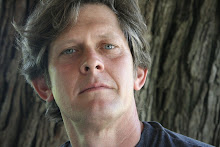This week's newspaper column: Read it in the Hattiesburg Amercian.
Try this.
Next time you’re driving across town, instead of noticing how things look, be aware of how the physical environment makes you feel.
On the typical suburban strip, do the oceans of concrete and asphalt make you anxious? Are the buildings you see interesting enough to make you take a second look? Do you feel any joy in the experience, or is it all business getting from here to there?
Now turn onto a tree-lined residential street, preferably one dating back a hundred years or more. Notice that the proportions and colors of your surroundings have changed. You pass underneath a soft green canopy of mature trees, and the older houses all seem to have character. You drive slower to take it all in. Can you feel the difference?
Better yet, for a more visceral experience, park your car and take off on foot. Now you can really feel your surroundings. Is your sensation different while strolling down a sidewalk buffered from the street by trees and vegetation than when walking along the shoulder of busy roadway? Do you feel different walking across a parking lot than you walking through a park or that neighborhood with the interesting houses? What if there’s no sidewalk? How does that change your perception?
You don’t need a Ph.D. for this little experiment. We all, as humans, have the innate ability to intuitively feel the world around us. This applies to the world we build as well as our natural surroundings.
I’ve often heard people say “I like old buildings.” But what is it that we like about them? Why do they seem to have so much character and personality?
Go to any old downtown district where the older buildings are still intact. The buildings play, the shades and shadows dance, and the space comes alive. The facades are not self-conscious and reserved; they are expressive.
There was a time when buildings and neighborhoods were designed with the human spirit in mind, and unapologetically so. No wonder we find so much delight in those older buildings. The buildings and spaces we respond to most are those that most closely reflect our humanity.
Yes buildings must keep the rain out and not fall down, and our exterior spaces must facilitate our movement from here to there, but those are intellectual exercises. Building codes and zoning ordinances exist to insure that we adhere to the practical side of things.
We are emotional creatures. Love, joy, excitement, the feeling of safety – these are just a few of the emotions that elevate the human spirit.
When we construct buildings and carve out spaces that begin and end with practicality, the resulting environment becomes soul-less.
Conversely, when we go beyond practicality with design solutions that honor and express the human spirit, everything comes alive.




3 comments:
I just discovered your blog, and am thoroughly enjoying it!
Thanks Amy. : )
James, I so identify with all you have expressed here. Thank you for all you do...
Much love,
Rose Marie
Post a Comment